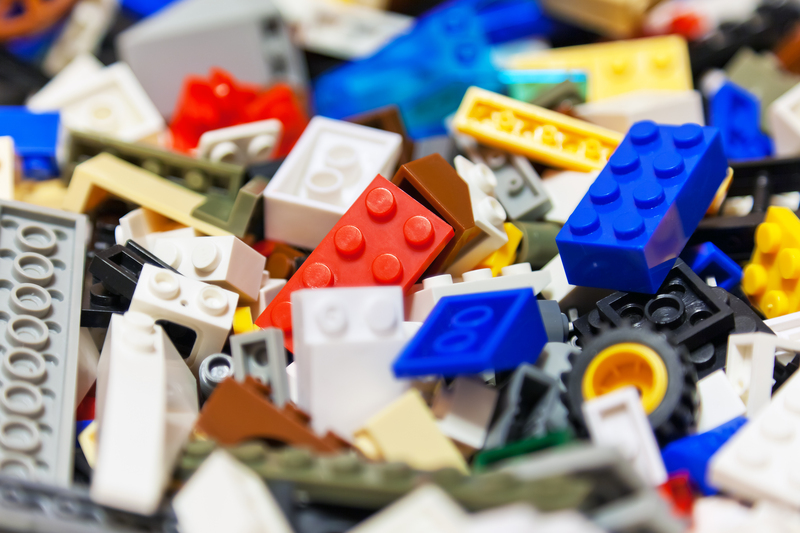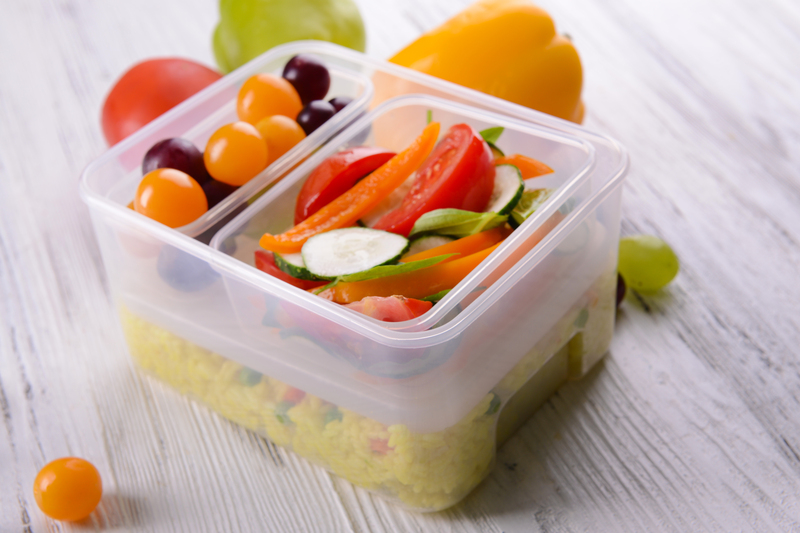Donation vs Recycling When Disposing of Pots and Pans: Making the Right Choice
When it comes time to clean out your kitchen, one of the biggest dilemmas is what to do with old pots and pans. Whether you've upgraded to a new set of non-stick cookware, or you're paring down your utensil collection for a minimalist kitchen, the question arises: Should you donate or recycle your old pots and pans? This comprehensive guide will help you make an informed decision, ensuring your pots and pans are disposed of in the most environmentally-friendly and socially-responsible way.
Understanding the Importance of Responsible Pot and Pan Disposal
Disposing of cookware improperly can be harmful to the environment. Many pots and pans are made from metals and synthetic materials that, if left in landfills, may take decades or even centuries to decompose. Moreover, improper disposal means valuable resources that could have been reused or repurposed go to waste. That's why examining the benefits of recycling versus donating your old kitchenware is essential for anyone making a lifestyle change or simply clearing clutter.
Reasons for Getting Rid of Old Cookware
- Outdated or damaged pots and pans
- Switching to safer or eco-friendlier cookware
- Reducing clutter in the kitchen
- Moving or downsizing
- Receiving cookware as a gift or purchase of a new set

What Condition Are Your Pots and Pans In?
Your cookware's condition is the first thing to consider when deciding between donation and recycling. Here's why:
- Usable Condition: If your pots and pans are still functional, even with minor scratches or discoloration, they may have life left in them for someone else.
- Damaged Condition: If the non-stick coating is peeling, warped, or handles are broken beyond repair, recycling may be a more ethical option than donation.
Tip:
It's a good practice to give your old cookware a thorough cleaning before either donating or recycling it. This increases the chance of acceptance by charities or recycling centers.
Donation: Giving Your Pots and Pans a Second Life
Benefits of Donating Pots and Pans
- Reduces landfill waste by extending the life of useful items.
- Helps those in need, such as families, shelters, or community organizations.
- Supports charitable causes and strengthens your community.
- Might be tax-deductible if given to qualified charities.
Donation offers a sustainable option for disposing of cookware that is still in good working condition. Charities, resale shops, and community organizations are often happy to accept used pots and pans that can be repurposed by others.
Where to Donate Pots and Pans
- Goodwill and Salvation Army - They typically accept kitchenware in good condition.
- Local shelters - Women's shelters, homeless shelters, and transitional housing programs often need basic kitchen supplies.
- Food banks and soup kitchens - Some may welcome donations of clean, usable cookware.
- Community thrift stores or charities - These organizations may directly use or sell the items to support their programs.
- Online community groups - Websites such as Freecycle, Craigslist, Nextdoor, or local Facebook groups can connect you with individuals in need.
How to Prepare Pots and Pans for Donation
- Inspect carefully for serious defects, especially hazardous non-stick coating issues.
- Wash and dry thoroughly.
- Attach lids, if available.
- Label unusual sizes or specialty items for better reuse.
Remember: Not all organizations accept all types of cookware. Check in advance about their policies on accepting Teflon, aluminum, cast iron, or copper pots and pans.
Potential Downsides to Donation
- Some items may not be accepted if too worn, scratched, or damaged.
- Donating large or heavy cookware can be a challenge without transportation.
- Not all materials are suitable for reuse in every community.
Recycling: Turning Old Pots and Pans into New Resources
Advantages of Recycling Cookware
- Reduces raw material extraction by reclaiming metals.
- Diverts waste from landfills, including cookware not suitable for donation.
- Saves energy over producing new materials from scratch.
- Supports a sustainable circular economy by transforming old items into new products.
What Types of Pots and Pans Can Be Recycled?
Most types of cookware can be recycled, including:
- Stainless steel pots and pans
- Aluminum cookware (including anodized aluminum)
- Copper pots and pans
- Cast iron cookware
However, plastic handles, lids, or non-metal attachments may need to be separated and disposed of differently. Non-stick coatings can sometimes make recycling challenging, so check with your local recycling provider.
Where to Recycle Pots and Pans
- Scrap metal recycling centers - These take cookware materials, but may require handles and non-metal parts to be removed.
- Local municipal recycling - Some city recycling programs accept small metal goods.
- Special collection events - Occasional community drives or drop-off sites may accept metals.
Steps for Recycling Your Pots and Pans
- Remove as much non-metal material as possible (such as plastic/rubber handles or glass lids).
- Rinse and dry to remove food residue.
- Sort pots and pans by metal type if required (stainless steel, aluminum, copper, etc.).
- Confirm with your chosen recycling center that they accept these items.
Challenges of Recycling Cookware
- Not all recycling centers accept all metals--call ahead to check requirements.
- Non-stick coatings like Teflon can be a barrier for some metal recycling programs.
- Some pots and pans are made from layered or bonded metals, complicating separation.
Donation vs Recycling: Pros and Cons at a Glance
| Criteria | Donation | Recycling |
|---|---|---|
| Environmental Impact | Extends product life; delays landfill disposal | Recovers raw metals; reduces waste |
| Community Benefit | Direct help to those in need | Indirect through resource conservation |
| Accepted condition | Gently used, fully functional | Damaged/broken accepted depending on material |
| Personal effort | Need to find appropriate charity | May require disassembling/removal of non-metals |
| Limitations | Not all organizations accept cookware | Not all centers handle non-stick or fused materials |
Special Considerations by Material Type
Non-Stick Pots and Pans
- Check for significant damage or flaking before donating; these can be hazardous.
- Many recycling centers do not accept Teflon-coated pans due to chemical contamination.
- If neither donation nor recycling is possible, check for manufacturer take-back or specialized disposal programs.
Cast Iron Cookware
- Very durable and often in high demand--consider donation if usable.
- Heavy items, but easily recycled if rusted or broken.
- Tip: Seasoning or removing surface rust can make cast iron more acceptable for donation.
Copper and Aluminum Cookware
- Both metals have high recycling value but may require separation from other materials.
- Some cookware contains a mix of metals that can complicate recycling.
- Tip: Remove plastic or glass handles for pure scrap recycling.
Donation vs Recycling: Which Is Best For You?
When deciding whether to donate or recycle your old pots and pans, consider the following:
- The condition of the cookware: Donate items in good, safe, working order; recycle those that are badly damaged.
- Available options in your community: Some areas have robust donation programs, while others have more advanced recycling facilities.
- The environmental and social impact you wish to prioritize.
For many eco-conscious consumers, the ideal approach is to put reuse before recycling. If your cookware still has value for someone else, donation should be your first choice. If not, recycling is the next-best solution to ensure metals and materials are given a second life.
Alternatives to Donation and Recycling
- Upcycling: Turn old pots or pans into planters, garden tools, or storage containers.
- Artistic projects: Many artists repurpose old cookware in sculptures or crafts.
- Manufacturer take-back schemes: Some brands accept their old pots and pans for safe recycling or renewal.

Frequently Asked Questions
Can you throw pots and pans in the garbage?
It's best not to put old cookware in your regular trash due to environmental impact. Metals should be recycled, and even non-stick cookware can often find a better end-of-life option.
What about pots and pans with plastic, wooden, or silicone handles?
Remove these parts before recycling. For donation, ensure they're securely attached and safe for use.
Do any cookware companies take back old products?
Some companies, like Calphalon and GreenPan, have programs for old cookware. Check your brand's website for details.
Is it safe to donate old non-stick pans?
Only if the coating isn't chipped, flaking, or worn out. Otherwise, recycling (if possible) or specialized disposal is best.
Conclusion: Making the Responsible Choice for Pots and Pans Disposal
Deciding between donation and recycling for pots and pans disposal ensures you reduce waste, help your community, and support sustainability. In most situations, donate usable cookware first. If not possible, seek out responsible recycling. By following these guidelines, you'll be part of the growing movement toward greener, more conscious living--one pot and pan at a time.
Ready to dispose of your old pots and pans? Explore local donation centers, recycling centers, or creative upcycling projects today, and give your cookware a second chance--benefitting both the planet and those in need.